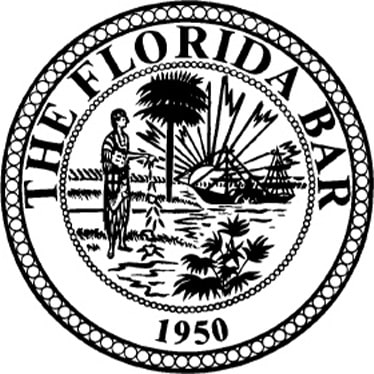Proper Miami car accident documentation can make or break your injury claim by establishing liability, detailing losses, and supporting maximum compensation. In Miami-Dade County alone, over 65,000 crashes in 2023 resulted in approximately 30,000 injuries and 300 fatalities, statistics that underscore why every photo, police report, and medical record matters. At MG Injury Firm, we’ve helped hundreds of crash victims across Florida build strong claims from smart, thorough documentation — often before they even speak to insurance.
Miami-Dade County Crash Statistics
In 2023, Miami-Dade County experienced a high number of car accidents, with over 65,000 crashes reported. These accidents resulted in a significant number of injuries, totaling approximately 30,000, and tragically, 300 fatalities. These statistics highlight the importance of understanding accident documentation.
This guide delivers step-by-step instructions on immediate scene actions, official reporting, Florida’s no-fault requirements, injury and damage documentation, and leveraging legal expertise. We’ll also explore common documentation questions and practical checklists with visual aids to empower your recovery and strengthen your case.
What Are the Immediate Steps to Take After a Miami Car Accident?
Acting swiftly at the crash scene preserves critical evidence and ensures your safety and that of others. Begin by securing the scene, then gather identifying details, capture visuals, and collect witness contacts — all essential Miami car accident documentation tips that form the foundation of your claim.
How Do You Prioritize Safety and Secure the Accident Scene?
The first priority after a collision is preventing further harm by moving vehicles out of active traffic lanes when safe and activating hazard lights. If injuries occur or vehicles cannot be moved, call 911 immediately. Securing the accident scene protects photographic evidence and stabilizes the environment, allowing accurate documentation of skid marks, vehicle positions, and hazardous conditions.
What Essential Information Should You Collect at the Scene?
Documenting key facts on-site builds credibility for your claim and expedites insurance and legal processes. Capture up to five data points from each driver and vehicle:
- Full name, phone number, and address
- Insurance company and policy number
- Driver’s license number and license plate
- Vehicle make, model, and year
- Date, time, and precise crash location
Recording these details prevents discrepancies and readies you for official reporting and claim filing. Our attorneys frequently use this exact data to challenge incomplete reports and reconstruct crash liability when insurers try to shift the blame.
How Should You Photograph and Video the Miami Accident Scene?
High-resolution images and brief videos serve as irrefutable proof of damage and roadway conditions. Photograph each vehicle’s exterior from multiple angles, close-ups of dents or shattered glass, and wide shots of the intersection or highway ramps. Capture video narration of skid marks, traffic signals, and any obstructed views. Label files with descriptive names and back them up to cloud storage for easy retrieval.
Why Are Witness Statements Important and How Do You Gather Them?
Witness statements bridge factual gaps and corroborate your version of events. Approach bystanders calmly, ask for their contact information, and record a brief written statement of what they saw, including vehicle movements, impact timing, and any irregular behaviors. Use your smartphone voice memo app for real-time testimony — this audio evidence reinforces credibility when statements vary.
Get Your FREE Case Review Today
How Do You Obtain and Use Official Miami Police Reports for Your Claim?
An official police report serves as the primary legal record that insurers and courts rely on to assign fault. Understanding how to secure, review, and integrate this document into your claim is crucial for building an airtight case.
When and How Should You Contact the Miami Police Department After a Crash?
Florida law requires reporting any collision involving injury, death, or property damage over $500. Dial 911 immediately for on-scene police response. If law enforcement does not arrive, file an online crash report within 10 days through the Florida DHSMV crash portal. Prompt reporting ensures authoritative documentation of the incident.
What Key Details Are Included in a Miami Police Accident Report?
Police reports consolidate investigative findings into structured data that supports liability and damages. Critical items include:
Report Element | Description | Why It Matters |
Report Number | Unique identifier for retrieval | Allows insurers to locate your case |
Parties Involved | Driver names, addresses, license details | Establishes identities and responsibilities |
Narrative Summary | Officer’s description of events | Provides impartial third-party account |
Diagram of Scene | Sketch showing vehicle positions | Visualizes impact locations |
Citations Issued | Traffic violations or warnings | Indicates potential fault or negligence |
This structured information underpins your insurer’s and attorney’s strategy for proving fault and damages.
How Can You Request and Access Your Miami Car Accident Police Report?
After the report is filed, retrieve it online via the Florida DHSMV crash portal by entering the report number, date of crash, and county. You may pay a nominal fee to download a certified copy. Alternatively, visit the local Miami Police Department records division with your report number and photo ID to request a physical copy. Early retrieval prevents delays in claim submission.
What Is the Role of Florida Highway Patrol vs. Miami Police in Accident Reporting?
The Florida Highway Patrol (FHP) and Miami Police Department share jurisdiction based on location. FHP handles crashes on state highways and interstates (e.g., I-95, Dolphin Expressway), while Miami PD investigates incidents on city streets. Identifying the correct agency ensures you request your report from the right source, avoiding retrieval obstacles and missed deadlines.
What Are Florida’s No-Fault Laws and How Do They Affect Your Car Accident Documentation?
Florida’s no-fault framework requires Personal Injury Protection (PIP) insurance and limits direct fault claims, making meticulous documentation essential to unlock full benefits and pursue additional damages when exceptions apply.
What Is Personal Injury Protection (PIP) Insurance and How Does It Work in Florida?
Personal Injury Protection (PIP) is mandatory coverage that pays for medical expenses and lost wages irrespective of fault. PIP policies in Florida require a minimum of $10,000, covering 80% of medical bills and 60% of lost income. Medical treatment must begin within 14 days of the crash to qualify.
Florida’s No-Fault Insurance System
Florida operates under a no-fault insurance system, requiring Personal Injury Protection (PIP) coverage. This coverage provides benefits for medical expenses and lost wages, regardless of fault, up to a certain limit. Understanding this system is crucial for navigating the claims process after an accident.
How Does Florida’s No-Fault Law Impact Your Insurance Claim Process?
No-fault rules steer initial claims through your own insurer’s PIP benefits, reducing the need to prove fault early. However, after PIP limits are exhausted or in cases of serious injuries (e.g., permanent scarring, bone fractures), you can file a liability claim against the at-fault driver. Detailed medical records and police reports become critical when transitioning from PIP to third-party claims.
What Are the Deadlines and Statute of Limitations for Filing Claims in Miami?
Florida enforces strict deadlines:
- PIP benefits: Claim within 14 days of treatment
- Property damage claims: Within 2 years of the accident date
- Personal injury lawsuits: Within 2 years of the crash
Statute of Limitations in Florida
Florida law sets specific deadlines for filing claims after a car accident. Personal injury lawsuits must be filed within four years of the crash, while property damage claims also have a four-year window. Adhering to these deadlines is critical to avoid losing the right to compensation.
Missing these deadlines typically bars recovery. Accurate date stamping of reports, medical bills, and account statements provides proof of timely action.
How Do You Document Injuries and Damages to Maximize Your Miami Car Accident Compensation?
Comprehensive injury and damage records illustrate the full extent of economic and non-economic losses. The sooner you begin, the stronger your compensation claim.
Why Is Immediate Medical Attention Critical After a Miami Car Accident?
Seeking prompt medical care establishes a clear link between the accident and your injuries. Emergency room notes, imaging results, and physician referrals create a chronological treatment trail. Early documentation prevents insurers from questioning whether injuries predated the collision.
What Types of Medical Records Should You Collect and Keep?
Gather every form of medical documentation related to your crash:
- Emergency department and hospital discharge summaries
- Diagnostic imaging reports (X-rays, CT scans)
- Specialist consultation notes (orthopedist, neurologist)
- Physical therapy and rehabilitation invoices
- Prescriptions and pharmacy records
These records validate injury severity and treatment costs, supporting higher compensation for medical expenses.
How Do You Track Property Damage and Repair Costs for Your Claim?
Track vehicle repair estimates from at least two reputable body shops and retain invoices for parts, labor, and towing. Photograph repair progress and damaged auto parts. If rentals are needed, keep rental agreements and daily rates. Accurate accounting of property damage prevents underestimation of losses.
What Are Economic vs. Non-Economic Damages and How Are They Documented?
Economic and non-economic damages follow distinct documentation paths:
Damage Type | Documentation | Examples |
Economic Damages | Medical bills, pay stubs, invoices | Treatment costs, lost wages, rental fees |
Non-Economic Damages | Personal journal, caregiver logs | Pain and suffering, emotional distress |
Detailing quantifiable costs alongside narrative accounts of pain, loss of enjoyment, and emotional trauma ensures both categories receive full consideration in settlement negotiations or court.
How Can a Miami Car Accident Lawyer Help Strengthen Your Documentation and Claim?
An experienced attorney transforms raw evidence into persuasive legal arguments, maximizing your recovery under Florida law and minimizing procedural pitfalls.
What Role Does Legal Expertise Play in Evidence Collection and Documentation?
Legal professionals know exactly which documents matter and how to present them effectively. They coordinate with medical providers for detailed reports, engage accident reconstruction experts, and interview witnesses to produce comprehensive affidavits. This strategic assembly of evidence builds credibility and pressure on insurers to settle fairly.
How Do Free Consultations with Miami Car Accident Lawyers Work?
Most firms, including MG Injury Firm, offer a no-obligation initial consultation to review your case and documentation. During this session, an attorney assesses your evidence, explains legal options, and outlines potential compensation. You pay nothing unless they secure a recovery, eliminating financial risk and ensuring expert guidance from day one.
Why Is Hiring an Experienced Miami Personal Injury Lawyer Important for Your Claim?
Attorneys familiar with Miami’s courts and insurers navigate complex procedural rules, anticipate defense tactics, and leverage local expert networks. Their negotiated settlements often exceed self-handled claims by 3–5 times, and their readiness to litigate compels insurers toward fair offers. Partnering with an advocate who prioritizes your recovery empowers you to focus on healing.
Contact us today for your free & confidential case review. Our team will help you get the compensation that you deserve.
What Are the Most Common Questions About Miami Car Accident Documentation?
Even the most careful victims encounter recurring documentation challenges. Clear answers to these questions help you avoid critical oversights.
What Evidence Is Crucial to Prove Negligence in a Miami Car Accident?
Proving negligence depends on combining official and personal records:
- Police reports with fault determinations
- Photographs and videos of damage patterns
- Medical records linking injuries to the crash
- Witness statements confirming key facts
- Property damage estimates showing financial impact
This layered evidence strategy establishes duty, breach, causation, and damages.
How Long Do You Have to File a Car Accident Claim in Florida?
Florida law grants four years from the date of injury to file a personal injury lawsuit. Property damage claims also have a four-year window. Initiating accurate documentation and early insurer notification ensures you meet these statutory deadlines without forfeiting rights.
How Do You Report a Miami Car Accident to Your Insurance Company?
Notify your insurer in writing as soon as possible, providing the police report number, date, location, and a concise description of injuries and damage. Submit your PIP application with all medical invoices and diagnostic reports. Keep records of all correspondence, including claim numbers and adjuster names.
What Compensation Can You Expect After a Miami Car Accident?
Compensation may include:
- Medical expenses and future treatment costs
- Lost wages and diminished earning capacity
- Property repair or replacement
- Pain and suffering and mental distress
- Loss of consortium and diminished life quality
Detailed records and skilled legal advocacy maximize the full scope of recoverable losses.
How Can You Use Checklists and Visual Guides to Document Your Miami Car Accident Effectively?
Structured tools and visual aids simplify complex documentation tasks, ensuring you collect every critical piece of evidence.
What Should a Miami Car Accident Documentation Checklist Include?
A comprehensive checklist guides you through each documentation step:
- Secure scene and call police
- Exchange driver and insurance details
- Photograph all vehicles and roadway conditions
- Record witness names and statements
- Seek immediate medical evaluation
- Request and review the police report
- Submit PIP claims and preserve medical bills
- Track repair estimates and receipts
Using this checklist prevents missed steps and reinforces your claim’s credibility.
How Can Photographs and Videos Enhance Your Accident Evidence?
Visual records convey details that words cannot, such as paint transfers, debris distribution, and precise skid-mark lengths. Diagrams and timestamped videos demonstrate crash mechanics visually. Embedding these within structured folders labeled by date and location ensures organized retrieval for legal or insurance review.
Are There Interactive Tools or Infographics to Help Miami Accident Victims Document Claims?
Online “How To” infographics and interactive checklists enable quick reference on smartphones immediately after a crash. Map tools that plot crash locations on Miami-Dade road networks help illustrate traffic patterns. Downloadable PDF templates streamline incident logging. These visual assets accelerate documentation and maintain consistency across multiple evidence sources, strengthening your overall case.
Contact Mausner Graham Injury Law Today
Don’t navigate Florida’s complex accident documentation process alone. With precise evidence gathering, expert legal guidance, and no-fee consultation from MG Injury Firm, you gain both clarity and confidence in pursuing maximum compensation. Contact our team today for personalized support and secure the proactive advocacy your recovery deserves.
Call Mausner Graham today
Free consultation available statewide
Offices in Miami, Doral, and Palmetto Bay
600+ 5-Star Google Reviews
Last Updated Wednesday, August 27th, 2025












